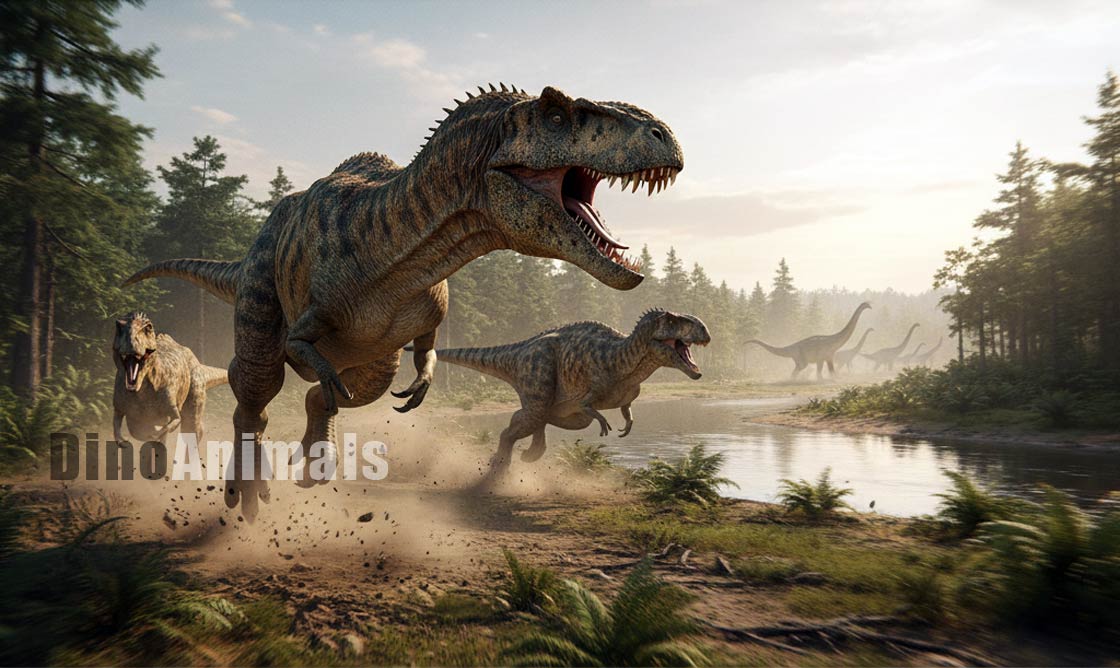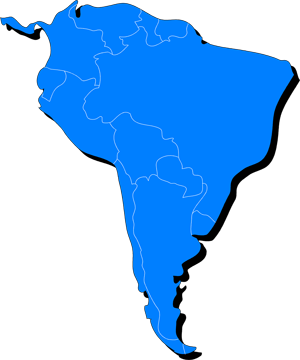Every month, 100,000 readers use the Dinosaur Database, but we receive no support from you. Developing and updating the database requires a lot of work. If you want it to remain open and be updated, please support us via the "Buy us a coffee" button available on every page or via the Support page.
Dinosaur: Mapusaurus roseae

| Length*: | 12.6 m | 41.3 ft |
| Weight*: | 8.2 t | 18,078 lb |
*The largest known specimen
Period
Epoch: Late Cretaceous
Stage: Cenomanian
Years: 100.5–93.9 Ma
Details
Status: valid
Author: Coria & Currie
Year: 2006
Distribution
Area: South America
Country: Argentina
Region: Neuquén, Río Negro
Formation: Huincul
Description
Mapusaurus roseae
Mapusaurus roseae was a large theropod dinosaur that lived during the Late Cretaceous period, approximately 100.5–94 million years ago. This apex predator roamed the region of what is now Patagonia, Argentina. The name “Mapusaurus” derives from the Mapuche word “Mapu,” meaning “land,” and the Greek word “saurus,” meaning “lizard,” while “roseae” honors Rose Letwin, a supporter of the excavation. Mapusaurus is closely related to the more famous Giganotosaurus and is part of the carcharodontosaurid family, a group of large carnivorous dinosaurs. Its discovery has provided crucial insights into the ecosystem and predator dynamics of South America during the Late Cretaceous.
Physical Characteristics
Mapusaurus roseae was a massive carnivorous dinosaur, estimated to have reached lengths of 11–13 meters (36–43 feet) and weighing up to 8 metric tons; height at hips approx. 3.7 meters (12 ft). It had a large skull measuring over 1.5 meters (5 feet) in length, filled with serrated, blade-like teeth that were perfect for slicing through the flesh of its prey. The body was relatively slender, with long, powerful hind limbs built for speed and agility, suggesting that Mapusaurus was a capable runner. It had relatively short forelimbs, which were likely not used for catching prey but may have been useful for balance or possibly grasping. Unlike some other theropods, Mapusaurus had elongated neural spines along its back, which might have supported a ridge or hump of muscle or skin.
Diet and Feeding Habits
As a top predator, Mapusaurus roseae was likely a hypercarnivore, feeding primarily on large herbivorous dinosaurs. Its size and strength suggest that it preyed on massive sauropods like Argentinosaurus, which lived in the same region. The teeth of Mapusaurus were adapted for slicing flesh rather than crushing bone, indicating that it likely targeted soft tissues and might have used its powerful jaws and sharp teeth to inflict deep wounds on its prey. Evidence suggests that Mapusaurus might have hunted in packs, a behavior that would have enabled it to take down much larger animals. This interpretation is supported by the discovery of multiple Mapusaurus individuals found together at a single site, suggesting possible social behavior or group hunting dynamics.
Habitat and Distribution
Mapusaurus roseae lived in the region of present-day Patagonia in Argentina, particularly in the Huincul Formation. During the Late Cretaceous, this area was a semi-arid environment with vast floodplains, river systems, and sparse forests. The climate was warm, with seasonal rainfall that supported a variety of plants and a diverse range of dinosaur species, including massive herbivores like Argentinosaurus and other large theropods. The habitat of Mapusaurus would have provided ample opportunities for hunting, whether stalking prey in open plains or ambushing from behind sparse vegetation near water sources.

Behavior and Social Structure
While the exact social behavior of Mapusaurus roseae remains speculative, the discovery of multiple individuals together suggests that it may have lived in groups or engaged in cooperative hunting. Group hunting would have allowed Mapusaurus to target much larger prey, which single individuals might have struggled to capture alone. This potential pack-hunting behavior is one of the key factors that distinguishes Mapusaurus from many other large theropods. However, some scientists argue that the accumulation of multiple individuals at a single site could also be due to environmental factors, such as a drought or flood, rather than evidence of pack hunting. Nevertheless, the possibility of complex social behavior adds an intriguing dimension to our understanding of this large predator.
Discovery and Research
Mapusaurus roseae was discovered during a series of excavations led by paleontologists Rodolfo Coria and Phil Currie from 1997 to 2001 at the Huincul Formation in Patagonia, Argentina. The site yielded a rich concentration of bones from several individuals of varying ages, making it one of the most significant theropod discoveries in South America. The species was formally described in 2006. This find provided key insights into the anatomy, growth, and potential social behavior of Mapusaurus. Ongoing research continues to explore the relationship between Mapusaurus and other carcharodontosaurids, as well as its role in the ecosystem of the Late Cretaceous in South America.
Significance and Interesting Facts
Mapusaurus roseae is significant for its potential evidence of social behavior and group hunting, which challenges the traditional view of large theropods as solitary hunters. The discovery of Mapusaurus alongside fossils of massive sauropods suggests a complex predator-prey dynamic, where large carnivores could have worked together to bring down gigantic herbivores. The find also contributes to our understanding of the diversity and distribution of carcharodontosaurids in South America during the Cretaceous. As a close relative of Giganotosaurus, Mapusaurus helps clarify the evolutionary history of this group, highlighting the range of ecological niches these predators occupied.
Locations
Sources
Material: At least 9 individuals.
References: Coria, R.A. & Currie, P.J. (2006) "A new carcharodontosaurid (Dinosauria, Theropoda) from the Upper Cretaceous of Argentina".
Coria, R. A., & Currie, P. J. (2006). A new carcharodontosaurid (Dinosauria, Theropoda) from the Upper Cretaceous of Argentina. Geodiversitas, 28(1), 71-118.
Lamanna, M. C., Smith, J. B., & Lacovara, K. J. (2002). Theropod dinosaurs from the Late Cretaceous of North Africa and South America. Journal of Vertebrate Paleontology, 22(3), 75A.




